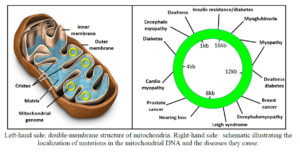The development of the CRISPR/Cas9 genome editing technology marked a revolution in the way we approach biological research, an achievement rewarded with the Nobel Prize in 2020. CRISPR/Cas9 allows to change our very genetic code, representing a giant leap forward in our ability to understand and treat diseases by eliminating the cause at the root of the disease itself.
Nicola De Franceschi
In spite of this enormous potential, a relatively small but crucially important fraction of the DNA that regulate our cells still remains beyond the reach of CRISPR/Cas9. This “untouchable” DNA is contained in very special organelles of the cell, called mitochondria. Mitochondria are often called the “powerhouse” of the cell, because they provide the bulk of energy needed especially in cells such as muscles and brain cells. It is therefore not surprising that mutations in the mitochondrial DNA leads to devastating and largely intractable diseases that affect primarily brain and heart, along with several types of cancer.
The reason why CRISPR/Cas9 cannot edit the mitochondrial DNA resides the peculiar structure of the mitochondria themselves. The mitochondrial DNA is separated from the cytoplasm of the cell by two membranes, which are highly impermeable to RNA. One crucial component of the CRISPR/Cas9 system is an RNA strand, that must access the DNA in order to perform its function. Currently there is no way to transport RNA across the mitochondrial membranes.
But this may be about to change thanks to the flurry of research that has been spurred by the COVID-19 pandemic. Indeed, it has been recently discovered that coronaviruses have the ability to synthesize a set of proteins that collectively form a channel. But this is no ordinary channel: it is the only know example of a channel sitting on two membranes, and able to transport RNA across them.
In this project, I propose to purify and study this protein channel, finding out how it works and how we can use it for a different purpose: transporting RNA in the mitochondria. It is in fact rather straightforward to re-direct this channel to mitochondria in living cells.
If this strategy works, we will be finally able to edit the mitochondrial DNA, in the same way we edit the cellular DNA. We could study and ultimately cure a number of devastating diseases that originate from mutations in the mitochondrial DNA, and for which there are currently very limited treatments available.
Project details
Project title: Transport of RNA Across Mitochondrial Membranes: towards mitochondrial genome editing
Principal Investigator: dr Nicola De Franceschi
Host institution: The International Institute of Molecular Mechanisms and Machines Polish Academy of Sciences
Project duration: 01.07.2023 – 30.06.2025
Project’s website: https://www.membranemachines.com/polonez-bis-2


